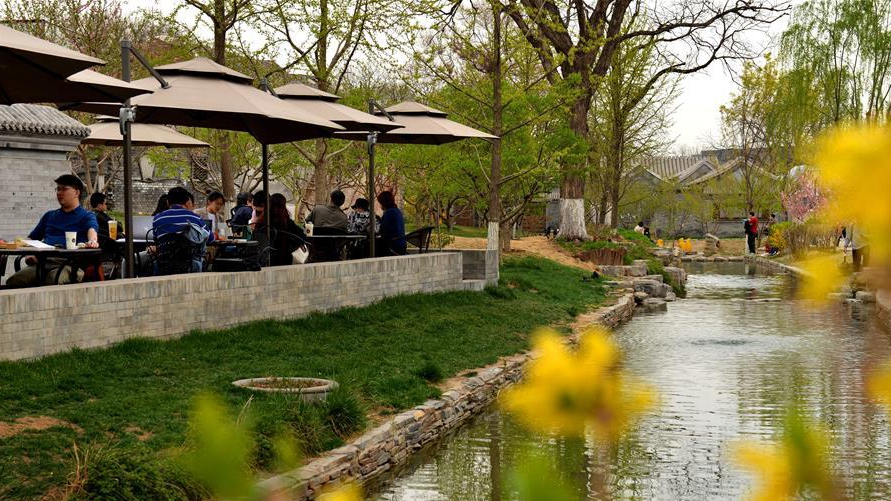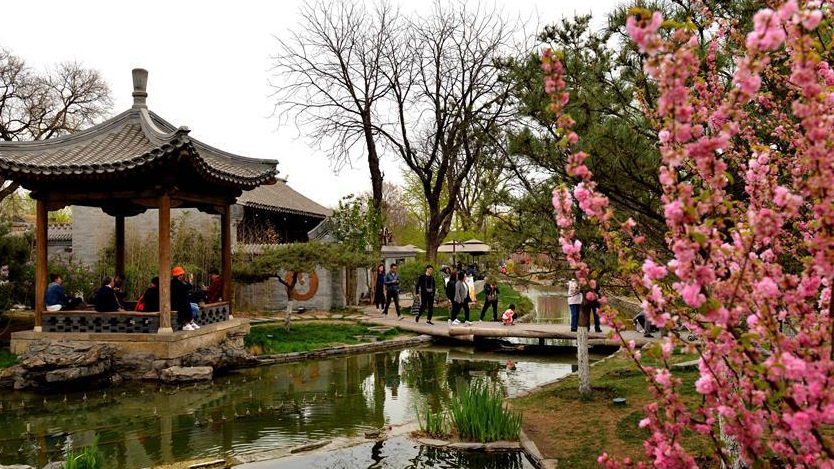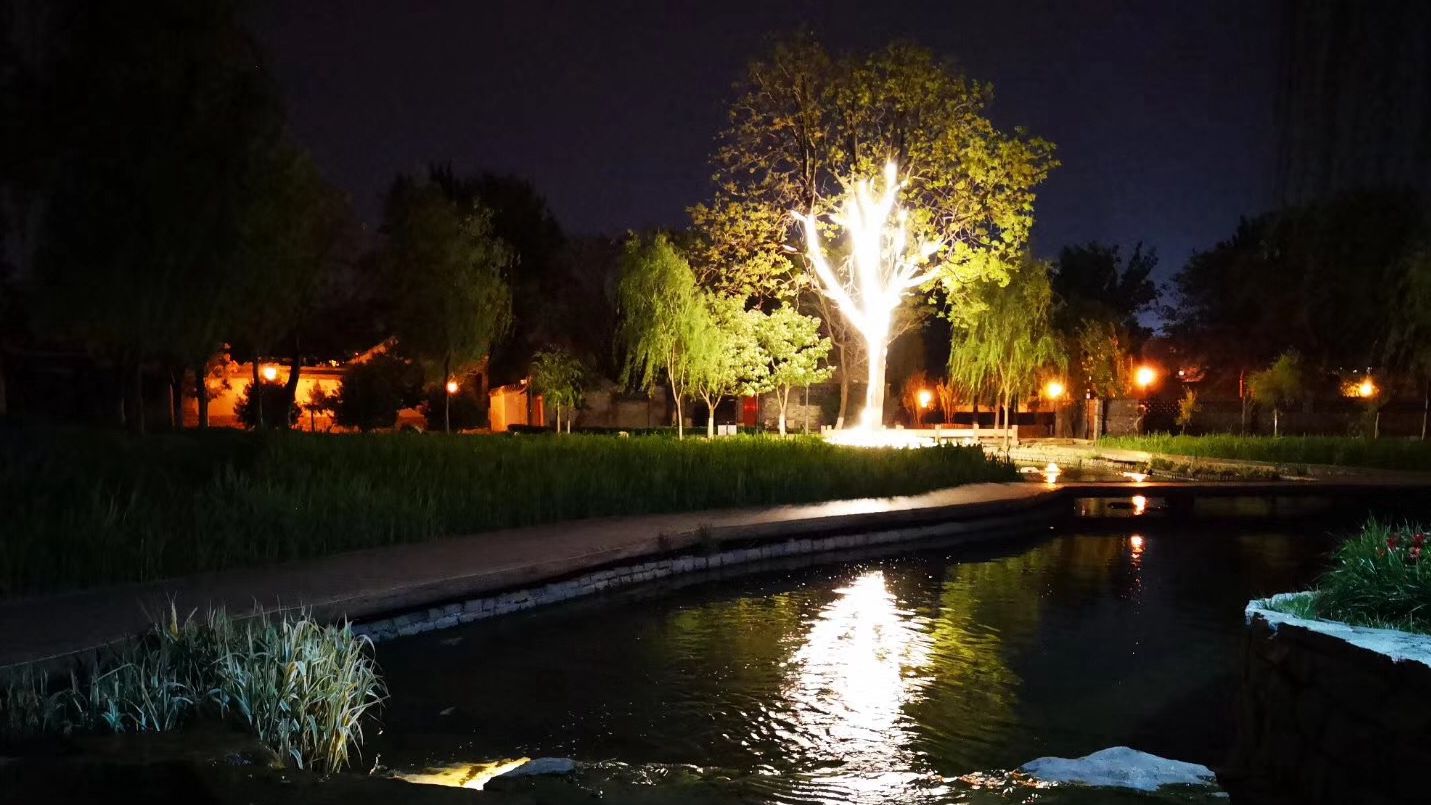
Culture China
14:41, 26-Apr-2019
Qianmen: Regeneration and future of the old city
By Ye Qing

Qianmen area is one of the
"memories" of the old Beijingers. From the prosperity in the Ming and
Qing Dynasties to the decline in the later period to the rebirth today, its
change is one of the microcosms of China's urban changes.
The green landscape of Sanlihe in Qianmen area, which is about 900 meters long, is a new attempt to excavate the river again and restore the historical features of the ancient capital in Beijing in recent years. The reconstruction of this area is also derived from the planning and conception of the protection of the old city in Beijing's Dongcheng district.
Restore history
The history of Sanlihe can be traced back to the Zhengtong period (1427-1464) of the Ming Dynasty (1368–1644). The eastern district of Qianmen, where Sanlihe is located, was once one of the most representative ancient streets in Beijing, which was also a gathering place for merchants and large families.
Over the centuries, however, the city has changed several times, and Qianmen has become one of the most densely populated areas in Beijing.
In August 2016, the Sanlihe landscaping project was launched. The historic river is also restored according to the historical location of the river.

The green landscape of Sanlihe on April 6. /Xinhua News Agency Photo
The green landscape of Sanlihe on April 6. /Xinhua News Agency Photo
"In the middle of the island are Chinese toon trees that have been around for hundreds of years," said Duan Jinmei, deputy general manager of Tianjie Groups. "Also, the old bricks, door piers and stone materials removed in the repair process were all retained."
There are 480 households in the project bid farewell to dilapidated bungalows. Nine hutongs have undergone municipal renovation and landscape upgrading. After eight months of renovation, the surrounding residents' happiness has been greatly improved.
Excavating history
Different from the environmental renovation of other hutong blocks, Xidamochang street not only restores the hutong style but also introduces cultural and creative elements, opening a new life for the old block.

The green landscape of Sanlihe on April 6. /Xinhua News Agency Photo
The green landscape of Sanlihe on April 6. /Xinhua News Agency Photo
Xia Linmao, secretary of Dongcheng District, said that the change stems from a shift in the conservation philosophy of the old city. "To retain the nostalgia and memory of old Beijing, we must protect the cultural heritage of the old city," Xia added.
In addition to strengthening the protection and utilization of cultural relics, celebrity's former residence, and Siheyuan, the connotation of hutong culture in the old city should be further explored, and the time-honored brands, old objects and intangible cultural heritage of Dongcheng should be organized, said Xia.
After more than two years of renovation, the original site of the former occupied Linfen Guild Hall has undergone a series of improvements, which not only get rid of the old appearance, but also add commentators and exhibitions, and become a part of Beijing guild culture.

Night scene of Sanlihe green landscape on April 25. /CGTN Photo
Night scene of Sanlihe green landscape on April 25. /CGTN Photo
"There are many historical relics on display," said Duan Jinmei. Visitors can learn about Beijing's unique guild culture, the status quo of guilds protection, and feel the accumulation and weight of history.
On the premise of respecting the history and continuing the cultural context, Xidamochang street introduces international elements, including cultural innovation, livelihood service, science and technology, environmental protection, and art exchange, making the best use of the role of the modern block.
(Top Image: Night scene of Sanlihe green landscape on April 25. /CGTN Photo)

SITEMAP
Copyright © 2018 CGTN. Beijing ICP prepared NO.16065310-3
Copyright © 2018 CGTN. Beijing ICP prepared NO.16065310-3